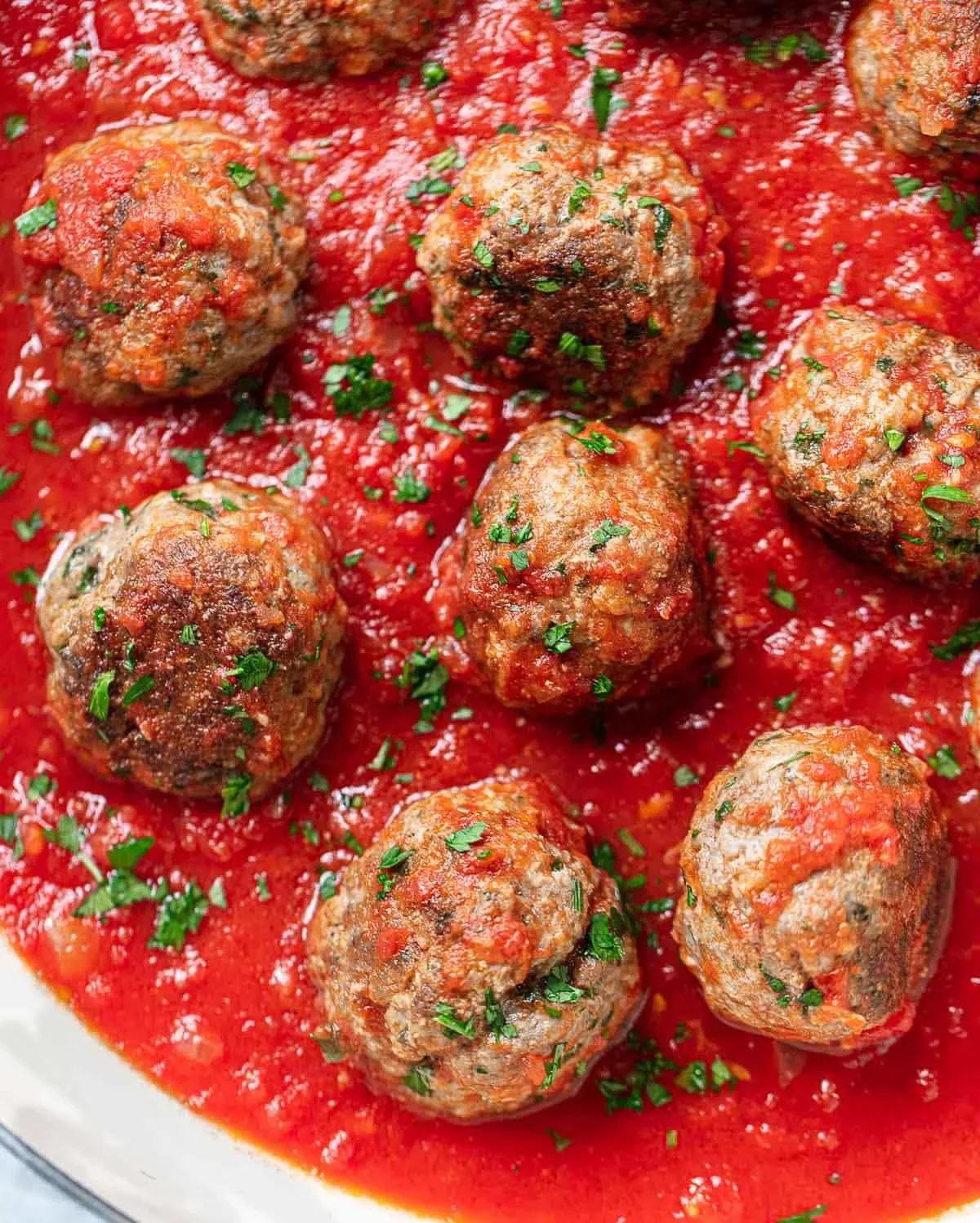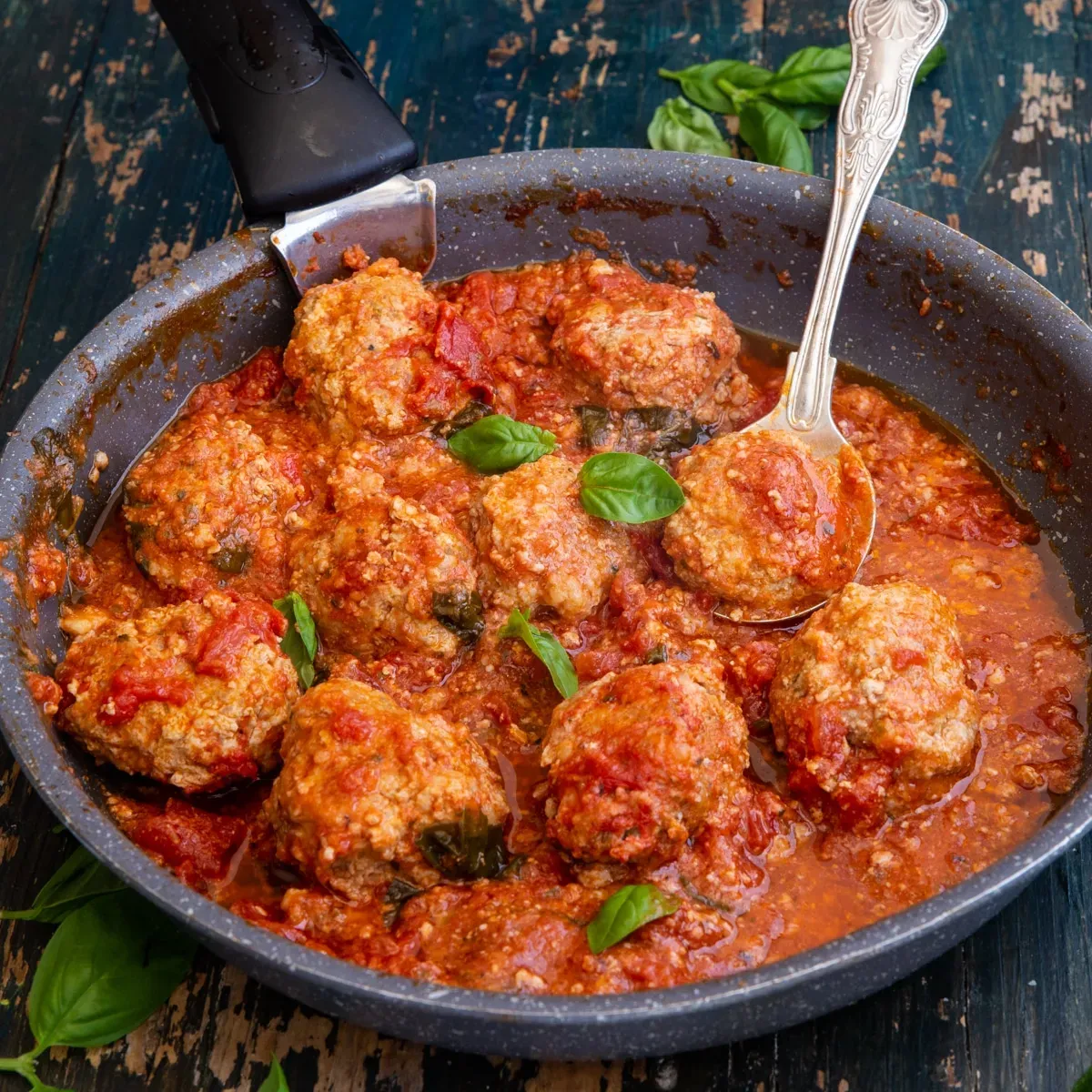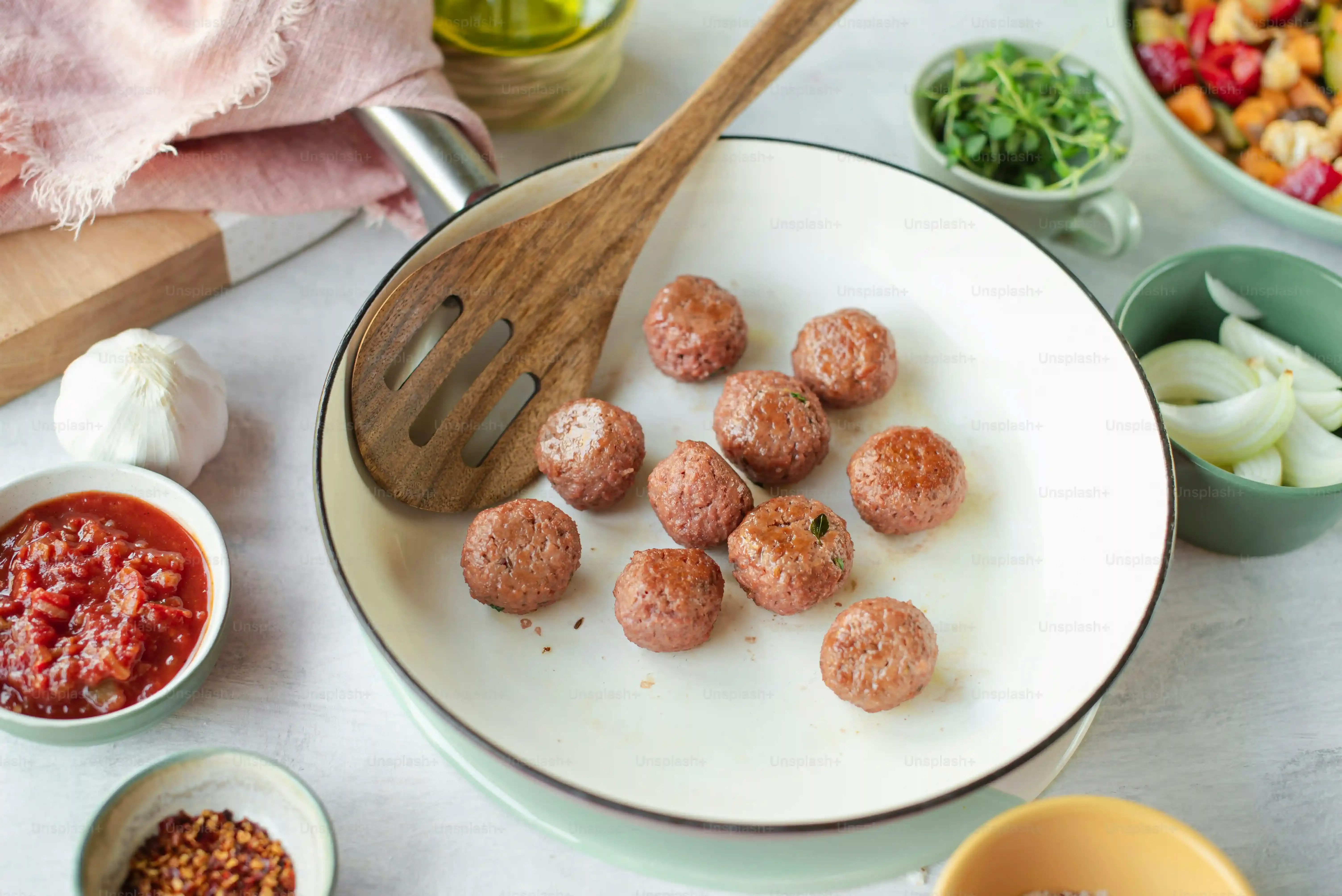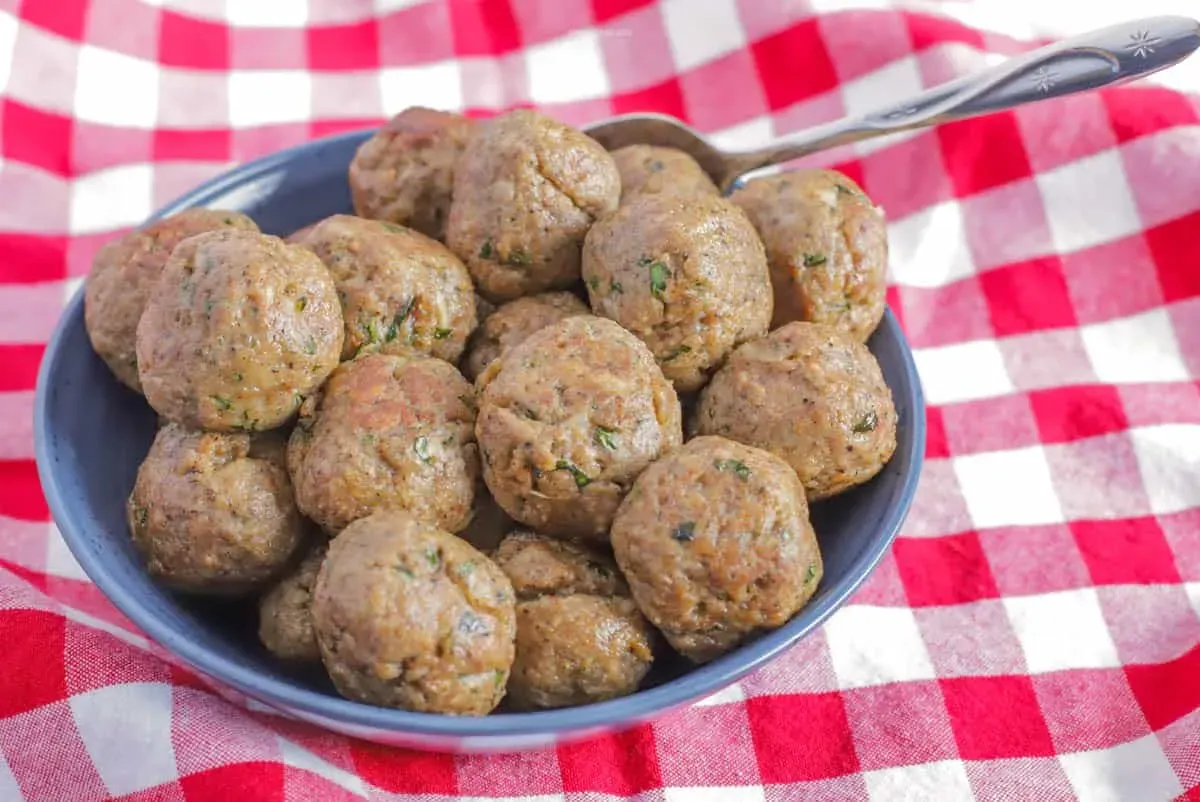Table of Contents
Alright, let's talk meatballs. Not those sad, dry little rocks some places try to pass off as Italian. We're talking about the kind that make you close your eyes and remember Sunday dinner at Nonna's house, even if you didn't have a Nonna. The kind that are tender, bursting with flavor, and practically melt in your mouth, drowning happily in a rich tomato sauce.
Why These Old World Italian Meatballs Are Different

Why These Old World Italian Meatballs Are Different
Forget those dense, sad spheres you sometimes find drowning in watery sauce. What sets a real old world italian meatball recipe apart isn't just nostalgia; it's a commitment to tenderness and deep flavor. Most folks mess up by using only lean meat, overworking the mixture, or skipping the crucial binder that keeps things moist. A truly great meatball has a light, almost fluffy texture inside, stays juicy even after simmering for hours, and carries the taste of garlic, herbs, and quality meat, not just filler. It’s about creating a tender crumb that absorbs the sauce, rather than repelling it, making each bite a little piece of comfort.
Ingredients for Your Old World Italian Meatball Recipe

Ingredients for Your Old World Italian Meatball Recipe
The Meat Blend: Fat is Your Friend
let's get real about the meat. This is where many recipes go wrong right out of the gate. Using super lean ground beef might sound healthy, but for a proper old world italian meatball recipe, it's a disaster waiting to happen. Fat equals flavor and, crucially, moisture. A classic blend is usually a mix of ground beef and pork. Beef brings that robust, savory base, while pork adds tenderness and a different kind of richness. Aim for something with a decent fat content, maybe 80/20 beef and ground pork. Don't be afraid of it; that fat renders down as it cooks, keeping your meatballs juicy instead of dry and crumbly.
The Binder: More Than Just Glue
The binder isn't just there to hold the meatballs together; it's key to that tender texture and helps trap all those lovely juices. Forget dry breadcrumbs straight from a can. We're using fresh breadcrumbs, ideally from day-old Italian or French bread. Soak them in milk – whole milk works best – to create what's sometimes called a panade. This wet bread mixture is magic. It adds moisture and creates a light, airy structure within the meatball as it cooks. Then you add eggs, which help emulsify everything and provide another layer of richness and binding power. This combination is crucial for preventing those dense, rubbery results.
- Fresh Breadcrumbs: Not the dry, dusty kind.
- Whole Milk: Adds fat and moisture to the breadcrumbs.
- Eggs: Binds and enriches the mixture.
- Parmesan Cheese: Adds salty depth and umami.
- Garlic: Freshly minced is non-negotiable.
- Fresh Parsley: Brightens everything up.
- Salt and Pepper: Essential seasoning foundation.
Flavor Boosters: The Aromatic Foundation
Beyond the meat and binder, it's the aromatics and seasonings that build the soul of your old world italian meatball recipe. Freshly minced garlic is a must – none of that pre-chopped jarred stuff, please. It just doesn't have the same punch. Fresh parsley, finely chopped, adds brightness and a touch of color. Grated Parmesan cheese brings a salty, nutty depth that permeates the entire meatball. Simple salt and freshly cracked black pepper are your foundational seasonings. Some recipes add a pinch of red pepper flakes for a subtle kick, or a touch of dried oregano, but keep it focused. The goal is a harmonious blend, not a spice explosion.
Making Your Tender Old World Italian Meatballs, StepbyStep

Making Your Tender Old World Italian Meatballs, StepbyStep
Mixing Your Meatball Magic (Gently!)
you've got your beautiful blend of meats, your milk-soaked breadcrumbs, your finely minced garlic, and that precious Parmesan. Now comes the crucial part: mixing. This isn't like kneading dough; you are not trying to develop gluten here. Overmixing is the enemy of a tender old world italian meatball recipe. Get everything into a large bowl. Use your hands – they are the best tool for this. Gently combine the ingredients. You want everything just incorporated, not mashed into a paste. Think of it like folding ingredients together rather than aggressively stirring or squeezing. The mixture will still look a bit loose, and that's perfectly fine. That looseness translates to tenderness later. Stop mixing the second everything looks combined. Seriously, walk away from the bowl.
Shaping and Searing for Success
Now that your mixture is ready, it's time to form those meatballs. Don't make them too big; a golf ball size is usually perfect. Wet your hands slightly with cold water if the mixture is sticking too much. Roll them gently – again, no need to pack them tightly. Place them on a baking sheet. While some recipes just drop them straight into sauce, giving them some initial heat is a game-changer for an old world italian meatball recipe. Broiling them for a few minutes or searing them in a hot pan develops a nice crust and locks in juices before they hit the simmering sauce. This step adds a layer of flavor and texture you just won't get otherwise.
- Use cold hands or wet hands to prevent sticking.
- Roll gently; avoid packing too tightly.
- Aim for uniform size for even cooking.
- Broil for 5-7 minutes until lightly browned.
- Alternatively, sear in oil in a hot pan until browned on all sides.
- Don't cook them through at this stage; they finish in the sauce.
Frequently Asked Questions About Old World Italian Meatballs

Frequently Asked Questions About Old World Italian Meatballs
Can I Make These Meatballs Ahead of Time?
Absolutely, and frankly, you should. This isn't a last-minute weeknight dinner project if you want them truly old world. You can mix and form the meatballs, then store them raw in the fridge for up to a day before cooking. Or, sear or broil them as directed, let them cool completely, and then store them in an airtight container in the fridge for 2-3 days. They'll finish cooking and soak up all that glorious sauce flavor when you add them later. Making them ahead actually deepens the flavors a bit as they rest.
What's the Best Sauce for Old World Italian Meatballs?
Look, you can drop these beauties into jarred sauce if you're in a real pinch, but you're doing them a disservice. A classic, slow-simmered marinara or Sunday gravy is the way to go for an authentic old world italian meatball recipe experience. We're talking crushed San Marzano tomatoes, sautéed onions and garlic, a touch of basil or oregano, and letting it bubble away for at least an hour, preferably longer. The meatballs cook *in* this sauce, absorbing its richness and releasing their own meaty goodness into it. It's a symbiotic relationship that elevates both.
Here are some sauce types that pair well:
- Simple Marinara: Tomatoes, garlic, olive oil, basil.
- Hearty Sunday Gravy: Adds pork ribs or sausage for extra depth.
- Bolognese (less traditional for meatballs, but works): Meat sauce with vegetables.
- Puttanesca (if you like capers and olives): A punchy, savory option.
Do I Have to Sear or Broil Them First? Can't I Just Cook Them in Sauce?
Technically, yes, you *can* just drop raw meatballs straight into simmering sauce. It's faster, sure. But you lose something vital: the Maillard reaction. That browning step, whether under the broiler or in a hot pan, creates complex flavors on the exterior of the meatball that you simply won't get from poaching them directly in liquid. It adds a layer of depth and texture that distinguishes a truly great old world italian meatball recipe from a merely okay one. Skipping it is like baking a cake but skipping the frosting. Why would you do that to yourself?
Bringing Old World Flavor Home
So there you have it. No magic, no secret incantations, just a solid approach to the old world italian meatball recipe. You've avoided the common pitfalls – the dry meat, the bland flavor, the shrinking act. Instead, you've got a batch of meatballs that are genuinely tender, deeply savory, and worthy of the name. Serve them simmering in sauce, piled high on spaghetti, or just sneak one straight from the pot. That satisfying bite, that burst of flavor – that's the real reward for getting it right. It might not be Nonna's kitchen, but these are damn close.